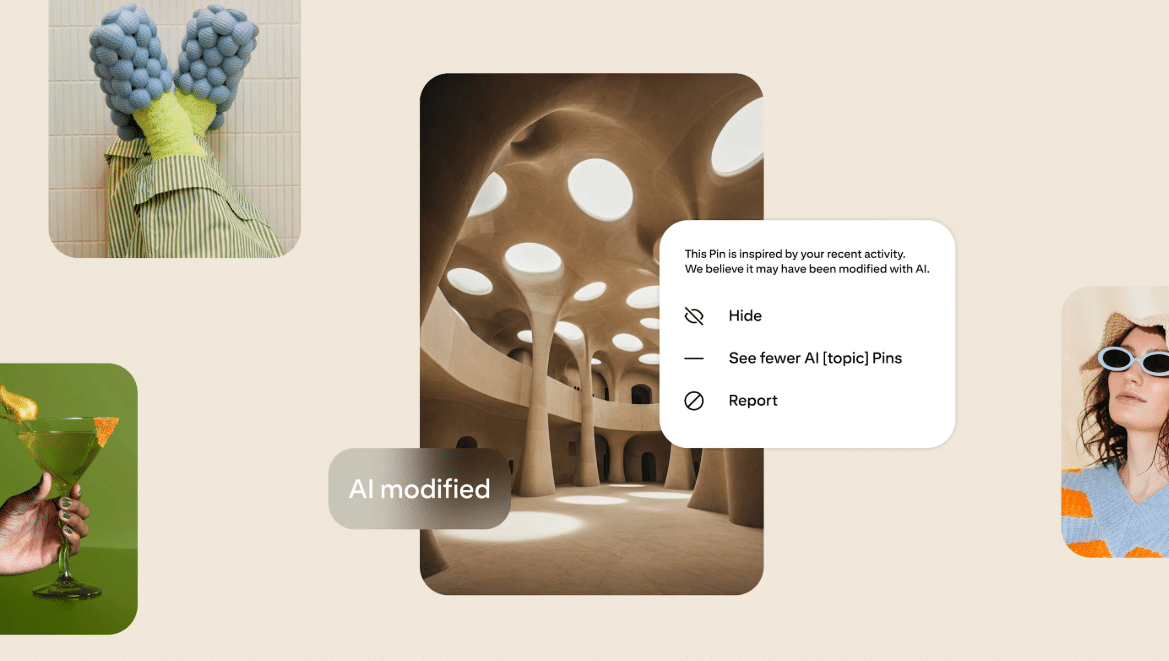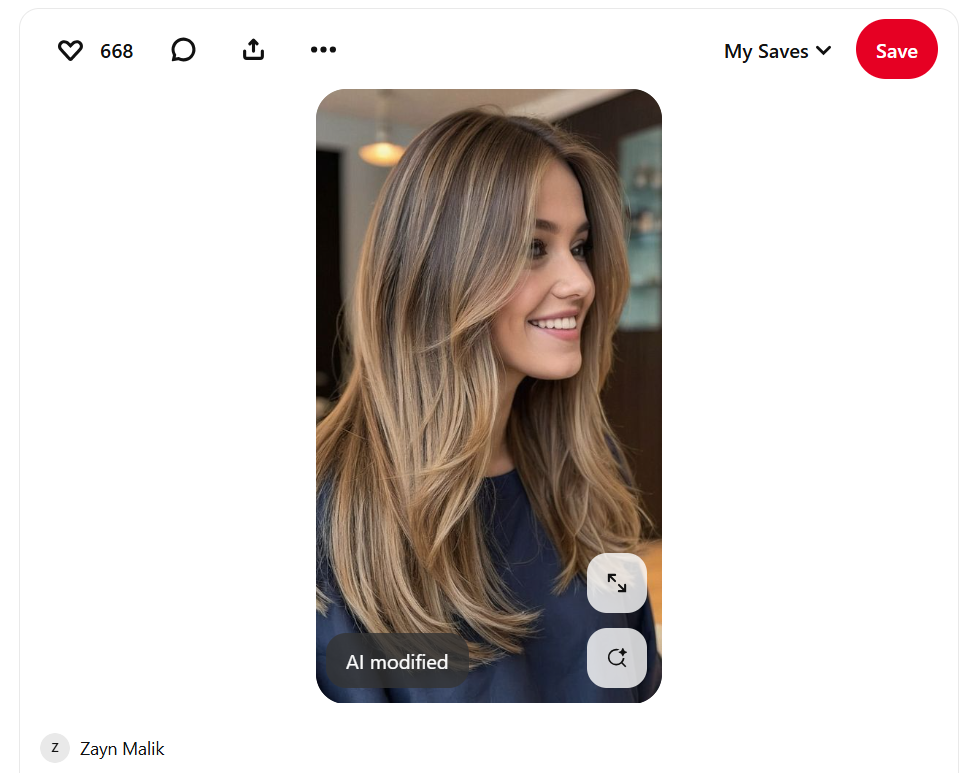Photos are one of the most effective and widely used forms of communication, both for personal use and within business environments. Pinterest has become the pinnacle of the Internet mood board. Every day we are exposed to hundreds of visual content pieces, but in this technological age, it is worth reflecting on the fact that not all of them are truly real. The capabilities of artificial intelligence (AI) have reached a level where it is becoming increasingly difficult to distinguish between real photos and AI-generated images. Thus, Pinterest, which is one of the most popular social media platforms, is attempting to address these emerging user challenges by introducing new features.
New Pinterest Developments in Interaction with AI
Pinterest is one of those social platforms where visual content is at the core of its identity. It is a highly popular channel, and as of January 2025, its posts reach more than 340 million users.
With such a large audience and reach, the platform also faces challenges, as aesthetically pleasing images are now increasingly being generated not by people but by AI, and with relative ease. On one hand, this shows how far AI has come and what a high-quality outcome it can now offer users. On the other hand, without clear labelling, users can easily be misled about the authenticity of the images they see.
To address these concerns and take steps toward greater transparency, Pinterest announced on April 30th that it will integrate new features into the platform to help manage AI-generated content.
How does Pinterest Plan to Manage GenAI Content?
The social platform has indicated that from now on, AI-generated content will be accompanied by GenAI labels – AI-modified – which will be placed on images either generated or modified using this technology. This will help users more easily identify which content was created by humans and which was aided by technology.

Associative photo of new feature introduction. Image credit: Pinterest Newsroom
This labelling technology has already been tested for some time, and the company is using image metadata and developing classifiers that can automatically detect AI content and label it appropriately.
This is what a labelled Pinterest photo looks like. Image credit: Zayn Malik / Pinterest
With these solutions, Pinterest aims to enhance users’ search and inspiration experience by giving them more control over the content they interact with. In the future, the company also plans to introduce a see fewer feature, which would allow the system to show users fewer images labelled as AI-generated.
Matt Madrigal, Chief Technology Officer, explains the platform’s updates:
‘As people encounter AI-generated content on Pinterest, we are empowering our users to make more informed choices about the content they see. Gen AI content on platform should enhance users’ ability to discover and act on their inspiration, and we are intentionally approaching this new landscape in a thoughtful way that benefits everyone.’
Solutions Aimed at Future Challenges
As AI becomes more prevalent across various fields, it is becoming increasingly difficult to control how and why AI is used. It would be unfair to say that AI-generated products are inherently bad — on the contrary, they offer significant opportunities, especially for users who lack the skills or experience to create appealing visuals, such as those shared on Pinterest.
However, this leads to the need for controlled oversight of AI-generated content. One of the main ways to do this is through distinct labelling, ensuring that users are clearly and transparently informed. This also ensures that users with specific needs receive real information about existing items and places — something especially relevant for artists, designers, and others seeking inspiration.
Final Thoughts
In the age of Gen AI, Pinterest, being one of the platforms most affected by AI in the realm of image generation, is taking an important step toward increased control of AI content. Labelling this type of content will offer users greater clarity and build trust in the platform through clearly identified and differentiated information.
If you are interested in this topic, we suggest you check our articles:
- AI Tools That Can Transform Photos into AI Art
- Can Generative AI Create a Passport Photo? Key Rules Explained
- A New Approach to AI Image Generation: Midjourney Releases V7
Sources: DataReportal, Pinterest Newsroom, The Verge

